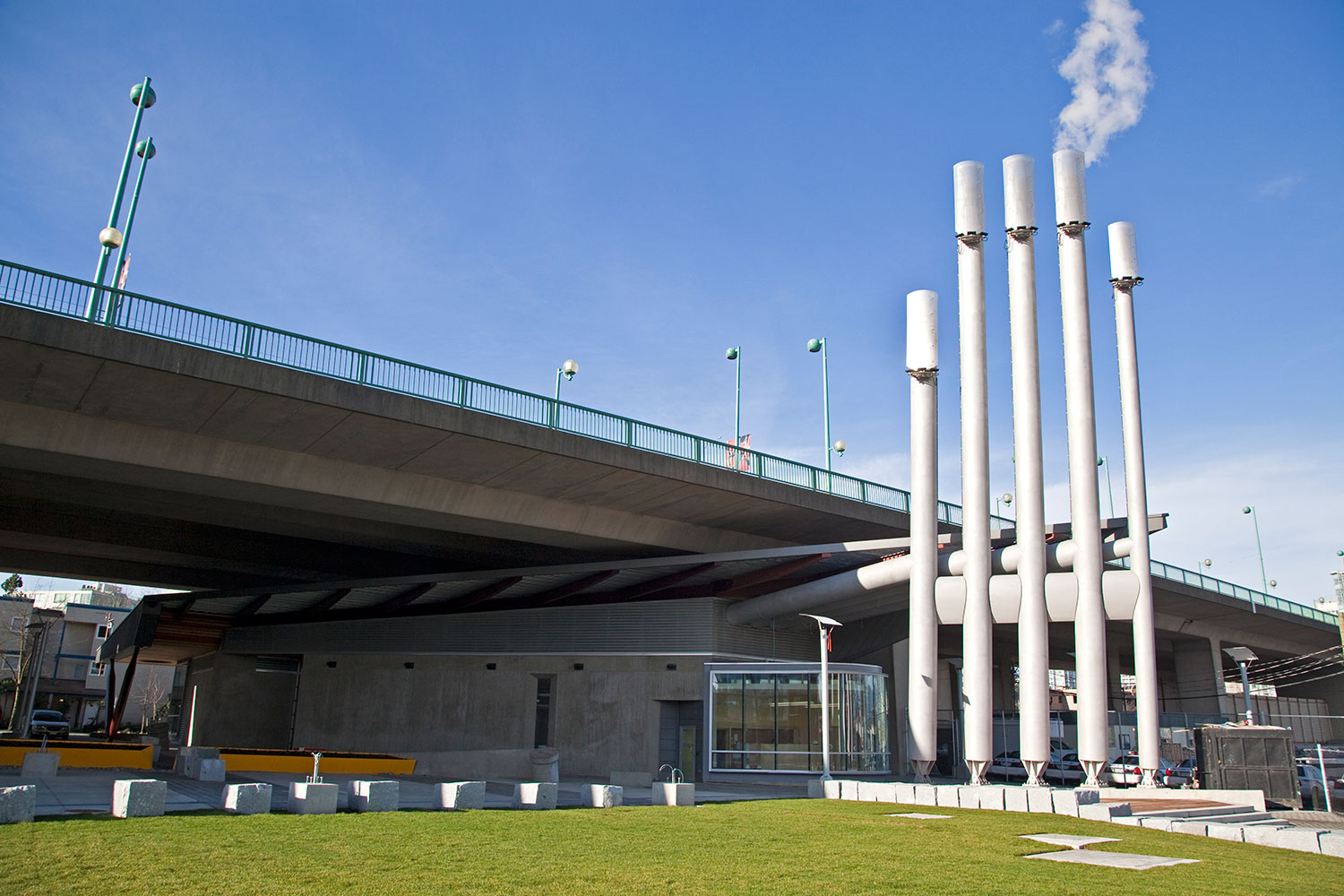District energy systems provide an energy-efficient and cost-effective option for heating and cooling many buildings in a given locale, from a central plant. They use a network of underground pipes to pump steam, hot water, and/or chilled water to multiple buildings in an area such as a downtown district, college or hospital campus, airport or military base. Providing localized heating and cooling requires less fuel and avoids the need to install separate heating and cooling and hot water systems in each building. District energy systems can use a variety of conventional fuels such as coal, oil and natural gas—whichever fuel is most competitive at the time. And because of a district energy system’s size, the district energy plant can also transition to use renewable fuels, such as various forms of biomass including wood and food processing waste, geothermal heat, and combined heat and power. Often, district energy systems are connected to combined heat and power (CHP) plants. Also known as cogeneration plants, CHP plants generate electric power in addition to heating and cooling, and can achieve energy efficiencies above 80 percent.
According to the International District Energy Association, more than 700 district energy systems are currently operating in the United States (including at least one system in each state), some of which date back to the 1800s.
BENEFITS
ENVIRONMENT
- Conserve energy
- Reduce carbon dioxide emissions
EQUITY AND COMMUNITY
- Make the benefits of renewable energy available to the individual building owner
- Increase comfort and convenience for customers
- Improve reliability of energy services
ECONOMIC
- Allow building owners to save money on energy costs for reinvestment elsewhere
- Offer an attractive return on investment
- Decrease building capital and life-cycle costs
- Generate local jobs by installing the system
BARRIERS TO IMPLEMENTATION
INSTITUTIONAL
Because district energy systems require installation of major long-term infrastructure (in the form of energy plants and piping infrastructure within the public right-of-way), some form of public involvement is often required. Even if the city does not have an ownership stake in the system, it will likely need to facilitate district energy development through policy mechanisms and incentives, zoning code amendments, expedited permitting, and/or helping to convene the relevant project stakeholders.
FINANCIAL
Because district energy systems require a high initial capital expenditure and financing for equipment, they are a long-term investment with a potentially long payback period. They are less attractive for areas with low population density or many small buildings; because each connection of a building to the system is quite expensive; in such areas the investment per building is considerably higher.
POLITICAL
There may be some concerns by city leaders about a private entity owning and operating a district energy system that operates partly on or under public right-of-ways.
CASE STUDY: ST. PAUL, MN
St. Paul’s district energy system was launched as a demonstration project in 1983 as a response to the energy crises of the 1970s. It was a public-private partnership between the City of St. Paul, State of Minnesota, U.S. Department of Energy, and the downtown business community. Currently, more than 185 buildings and 300 single-family homes (31.8 million square feet) are heated and 100 buildings (18.8 million square feet) are cooled in downtown St. Paul and adjacent areas through this system.
STRATEGIC PARTNERS
The system is owned and operated by District Energy St. Paul, a nonprofit organization established to operate the system. District Energy St. Paul partners with Ever-Green Energy to promote conservation and increased use of renewable energy sources.
FINANCING APPROACH
After receiving initial funding from federal, state, and local government sources, the organization supports its ongoing operations and maintenance costs from the rates paid by customers for heating and cooling services.
IMPLEMENTATION
District Energy Saint Paul contracts with its customers to provide heating and/or cooling services for a set period of years at a negotiated price. These contracts are typically 20 years in length, so the first round of contracts are coming up for renewal now with most customers choosing to continue the service.
LESSONS LEARNED
- Planning and coordination between policy makers, energy suppliers, and customers is critical for establishing clear goals and agreement on the means of achieving said goals.
- Evaluating current and projected heat and cooling demands, as well as available sources, is essential for establishing an energy efficient, cost-effective supply system.
OTHER CITIES
- Houston, TX
- Boston, MA
- Detroit, MI
- New Orleans, LA
- Battle Creek, MI
- Cleveland, OH
- Seattle, WA
- New York, NY
- Cornell University, NY
- Princeton University, NJ
- University of Texas, TX
REFERENCES
Download

